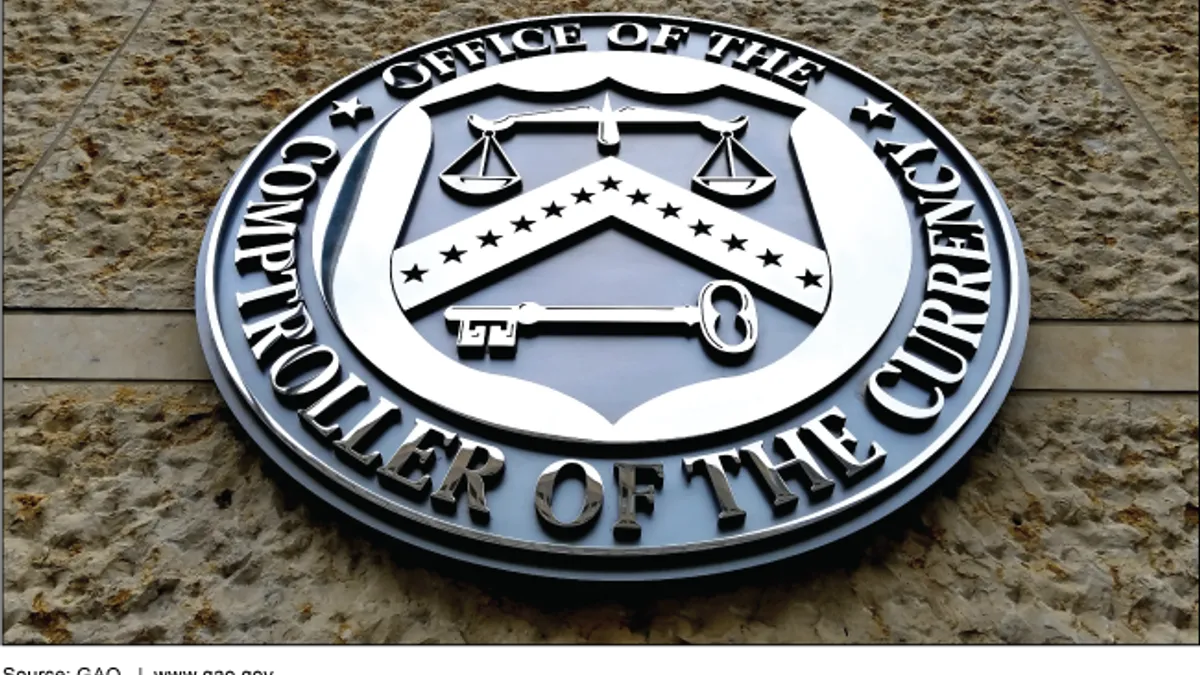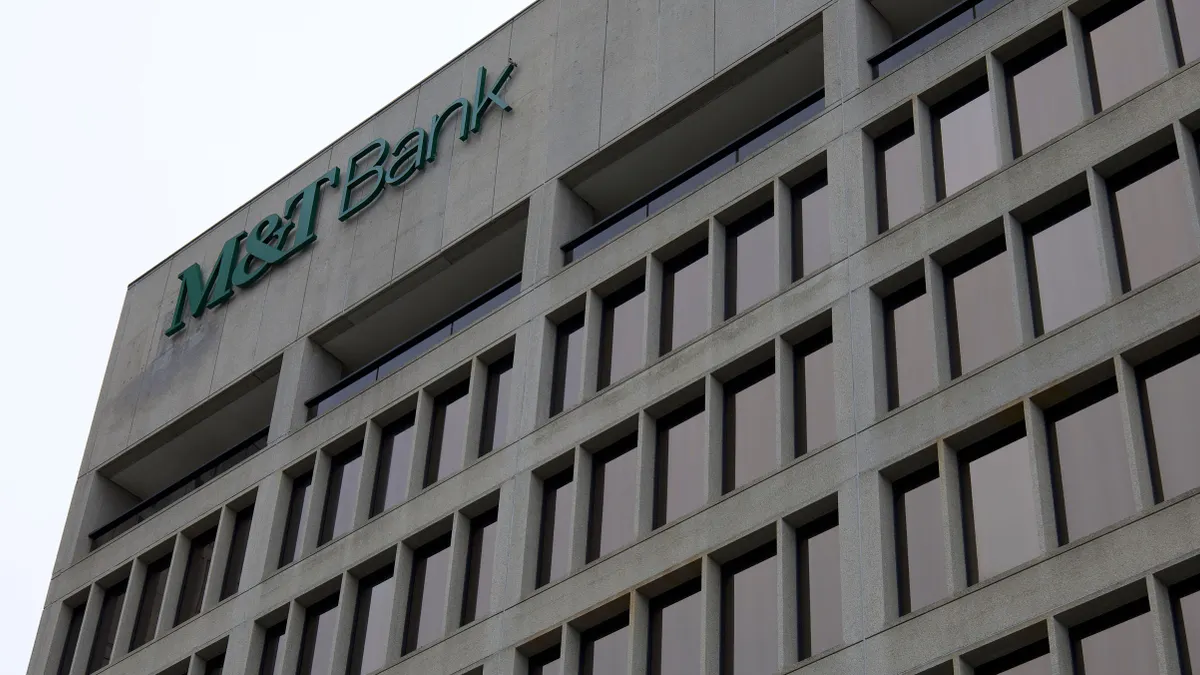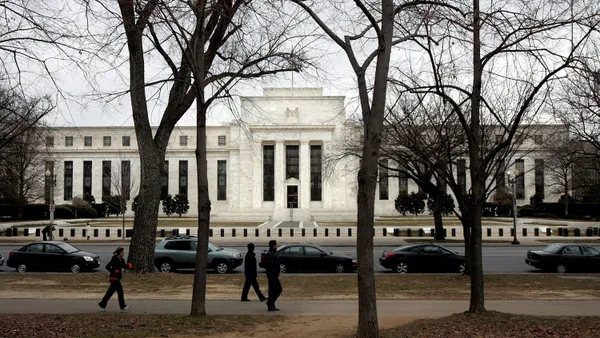Policy revisions the Office of the Comptroller of the Currency (OCC) unveiled Tuesday could indicate the agency will assess larger penalties against banks for misconduct and tie in restrictions on lenders’ business activities.
Some of the most impactful changes come to the penalty “matrix” the regulator uses to assess the severity of a violation. For one, the OCC created new categories based on asset size.
A previous version of the staff manual guiding penalty assessment, published in 2018, grouped together all banks with more than $100 billion in assets. Tuesday’s update creates separate groupings for large regionals ($100 billion to $500 billion); banks with between $500 billion and $1 trillion — namely, U.S. Bank, PNC, Truist and, soon, TD (provided its First Horizon acquisition is approved); and banks with more than $1 trillion, which encompasses JPMorgan Chase, Bank of America, Citi, Wells Fargo, Goldman Sachs and Morgan Stanley.
The categories also more specifically define banks with more than $5 billion in assets.
In another change, the manual explicitly states the OCC will consider restricting bank business “when appropriate” as a supplement to fines.
That practice is not new. When the OCC in September 2021 handed Wells Fargo a $250 million penalty for failing to make progress on a 2018 consent order, it also barred the bank from acquiring certain third-party residential mortgage servicing.
The OCC’s revised manual states: ”Such coupled relief may be appropriate when, for example, the institution has failed to make effective or sustainable progress on corrective actions despite a prior enforcement action … or has widespread or systemic deficiencies that require curtailing growth or expansion into new products or services.”
The factors surrounding leniency changed, too, with Tuesday’s update. The regulator, according to 2018 guidance, gave banks credit for "good faith," cooperation and restitution provided. Under the latest revision, that credit derives from self-identification, remediation and restitution. The OCC said the change in mitigating factors is meant “to provide a stronger incentive for banks to fully address underlying deficiencies.”
The policy updates announced Tuesday take effect Jan. 1.
The updated matrix "will strengthen the effectiveness and fairness of our enforcement actions," Acting Comptroller Michael Hsu said in a statement.
"It will help ensure that the civil money penalty is tailored to the facts and circumstances of each violation, and the updated mitigating factors will help ensure that the underlying problems are resolved in a timely manner," he said.
Under the new scoring parameters, a violation that rates a total of 140 points (based on 14 factors) may result in a penalty of up to $400 million for the largest banks. A violation that scored the same under previous guidelines would have topped out at $150 million.
Additionally, the new guidance is meant to toughen penalties on certain behaviors — redlining, for one.
The OCC took care to note, however, that the updated matrix “does not reduce supervisory decision making to a mathematical process and is only intended to be a guide and a starting point for discussion.”
The matrix “is not a substitute for sound supervisory judgment, and the OCC may depart from the matrix suggestions when appropriate and when based on the specific facts and circumstances of each matter,” the regulator said.














